If you’re planning to visit three countries in one trip, one of the most popular routes to take is Thailand-Cambodia-Vietnam. Experience the hustle and bustle of Bangkok and Ho Chi Minh, then witness Khmer culture and history with a trip to Siem Reap. These three countries have land borders you can cross during your journey. You can book a flight from Manila to Thailand or Vietnam and travel in a straight line to either end. These countries are also affordable destinations for Filipinos.
Getting a visa
Filipino passport holders don’t need a visa to enter Thailand, Cambodia, or Vietnam. Filipinos can stay in Thailand and Cambodia up to 30 days and stay up to 21 days in Vietnam.
Planning your trip
- Plot your route and choose your mode of transportation. Buses are the most common option when traveling by land. You can also take the train from Bangkok to the closest border town in Thailand before crossing into Cambodia.
- Ideally, book bus tickets online before your trip. This guarantees a seat, and you don’t have to stress about missing your connection.
- I would recommend checking prices and schedules through https://www.bookaway.com/ or https://12go.asia/en.
- You have the option to start your trip from either Bangkok or Ho Chi Minh. Choose a flight that arrives early in the morning, so you immediately have one full day and spend one less night on accommodation.
- You’ll have to use three different currencies – Baht, Dong, and Cambodian Riel. You can activate your debit or credit card so that you can withdraw from ATMs in the countries you’ll be visiting. I would normally just withdraw from an ATM or use my cards if the establishment allows it. If you bring foreign currency, make it the USD. The USD is widely used in Cambodia and some ATMs dispense it. Change enough money based on your spending habits.
Itinerary
This itinerary assumes you’ll start your trip in Bangkok, Thailand. I would recommend this city because both Cebu Pacific and Philippine Airlines have flights in the morning. Cebu Pacific has an early morning flight which allows you to start with one full day without spending money on accommodation. You can book this flight if you have the energy to hit the ground running upon arrival.
*This itinerary assumes you start with one full day.
Bangkok (Thailand)
Get out of Suvarnabhumi Airport.
By rail
Make your way to the Airport Rail Link station. Get on the train and alight at Phaya Thai Station or Makkasan Station. From either stop, you can take another train, taxi, or tuk tuk to your accommodation. The fare is approximately THB35 to THB45.
By bus
Another budget option is to take the S1 bus line to the city center; the fare is approximately THB60.
Get around Bangkok
A novel way to explore the city is to take the tuk tuk. These vehicles resemble a tricycle you see in the Philippines. The fare is approximately THB60+++ per ride, depending on your destination. FYI: pay per ride and not per person, if you’re traveling with a group. You could take a river taxi for approximately THB10-40 depending on your destination. The train is a go-to option for budget travelers and locals. Purchase a Rabbit Card for around THB200 and top it up once you use up your load. Grab is available in Bangkok, or you could hire a metered taxi to your destination.
Day 1
If your accommodation doesn’t allow early check-in, leave your bags in their storage room, and start exploring the city. Grab brunch in one of the cafes or restaurants in the city before visiting some of the most famous attractions.
Make your way to Grand Palace. This attraction is one of the most opulent in the city. It dates to the 1780s and is the king’s royal residence. The palace is also a venue for important occasions and accommodates heads of state. You’ll also find Wat Phra Kaew within the palace’s grounds. You’ll see the sacred Emerald Statue when you go inside Wat Phra Kaew. Walk to Wat Pho (which is near the palace) to see the famous reclining Buddha. The complex is also home to many other Buddhist statues, relics, and structures. End your day with a trip to Wat Arun or also known as the Temple of Dawn. This centuries old complex has many structures encrusted with colorful porcelain. This complex is also an ideal spot for watching the sunset. It is also lovely at night when it is lit up.
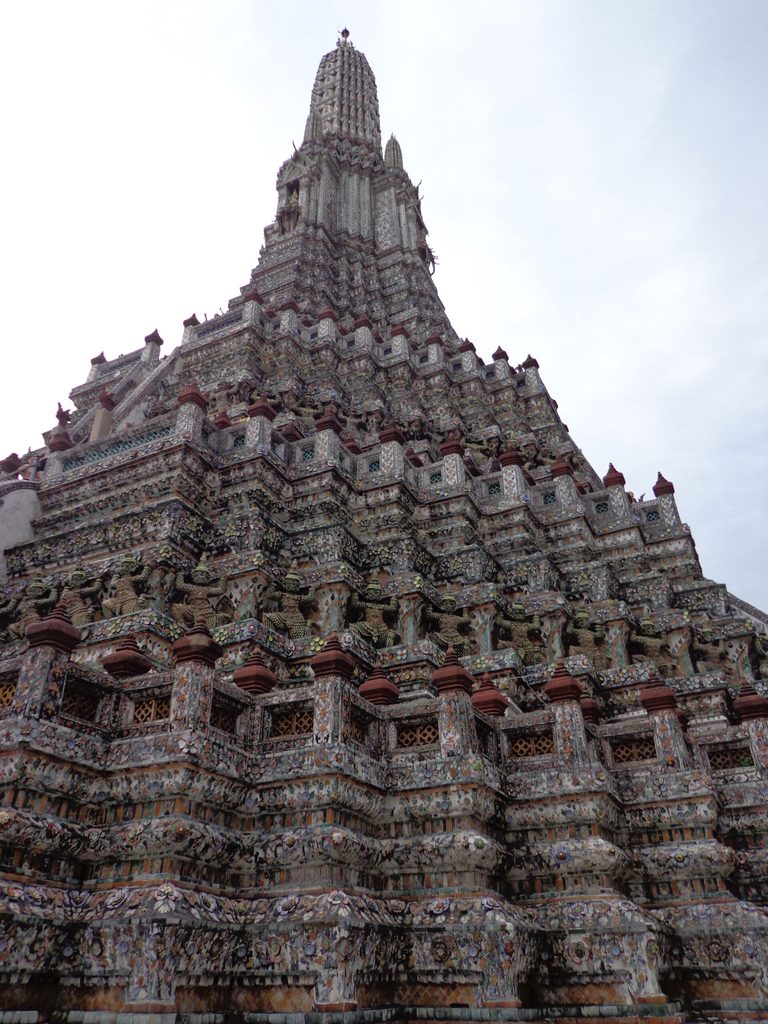
Fees:
- Grand Palace – THB500
- Wat Pho – THB200
- Wat Arun – THB100
Day 2
You’ll be doing a lot of bus rides and traveling for this three-country itinerary. I suggest spending your second day in Bangkok just experiencing the city. The city has plenty of shopping centers, markets, cafes, museums, temples, parks, and other attractions to fill your day. Go market-hopping to try authentic Thai food and drinks – visit Pratunam Market, Wang Lang Market, and Chatuchak Market, just to name a few. Check the schedules because some markets are only open during the weekend.
You could also do what many Filipinos do and go to a mall. Hang out in malls such as Icon Siam, Siam Paragon, MBK Center, and others. Alternatively, you could explore popular districts such as Sukhumvit, Khao San Road, and Silom. There are many cafes, bars, and restaurants in those areas. The city gets livelier at night (there’s a good reason The Hangover 2 was shot in Bangkok).
Day 3
On your third day, you’ll be traveling to Siem Reap, Cambodia. The most convenient way to cross the border without changing transportation along the way is by bus. Giant Ibis is a reliable and reputable bus company. The fare for the cross-border bus is around THB1,500 one way – a bit pricey, but good value. You could try looking for cheaper alternatives from the many travel operators in the city, but there’s a chance you might have to switch buses or vans along the way. You can check schedules or buy a ticket outright through their website: https://giantibis.com/index.php. You could also book and look for bus and van schedules from these two websites: https://www.bookaway.com/ or https://12go.asia/en.
Border crossing reminders:
- Don’t entertain the touts, just ignore them, and walk directly to immigration control.
- ASEAN passport holders are visa-free whenever they enter Cambodia.
Siem Reap (Cambodia)
The main attraction of Siem Reap is its ancient temples scattered throughout the city. You could explore different clusters of temples. However, for this itinerary, you’ll only visit the main ones. Most accommodations offer tour packages or recommend a tuk tuk driver they know. You could discuss the temples you want to visit with the driver. Hiring a tuk tuk driver costs around $25+++ depending on your itinerary. You could also just negotiate with any tuk tuk driver in town because they’re used to dealing with tourists who want to visit the temples.
You can find packages on third-party sites such as Klook. You could also look for tour operators in the city the day before your trip. Arrange a tour of the Angkor complex upon arrival from Bangkok to maximize your stay.
Day 4
After breakfast, check out of your accommodation and leave your things to go temple-hopping. The Small Circuit covers the highlights of a visit to Siem Reap; this route includes famous temples such as Angkor Wat, Angkor Thom, and Ta Prohm. Other stops in the itinerary include Baphuon Temple, Terrace of the Leper King, Phimeanakas, and the Terrace of the Elephants.
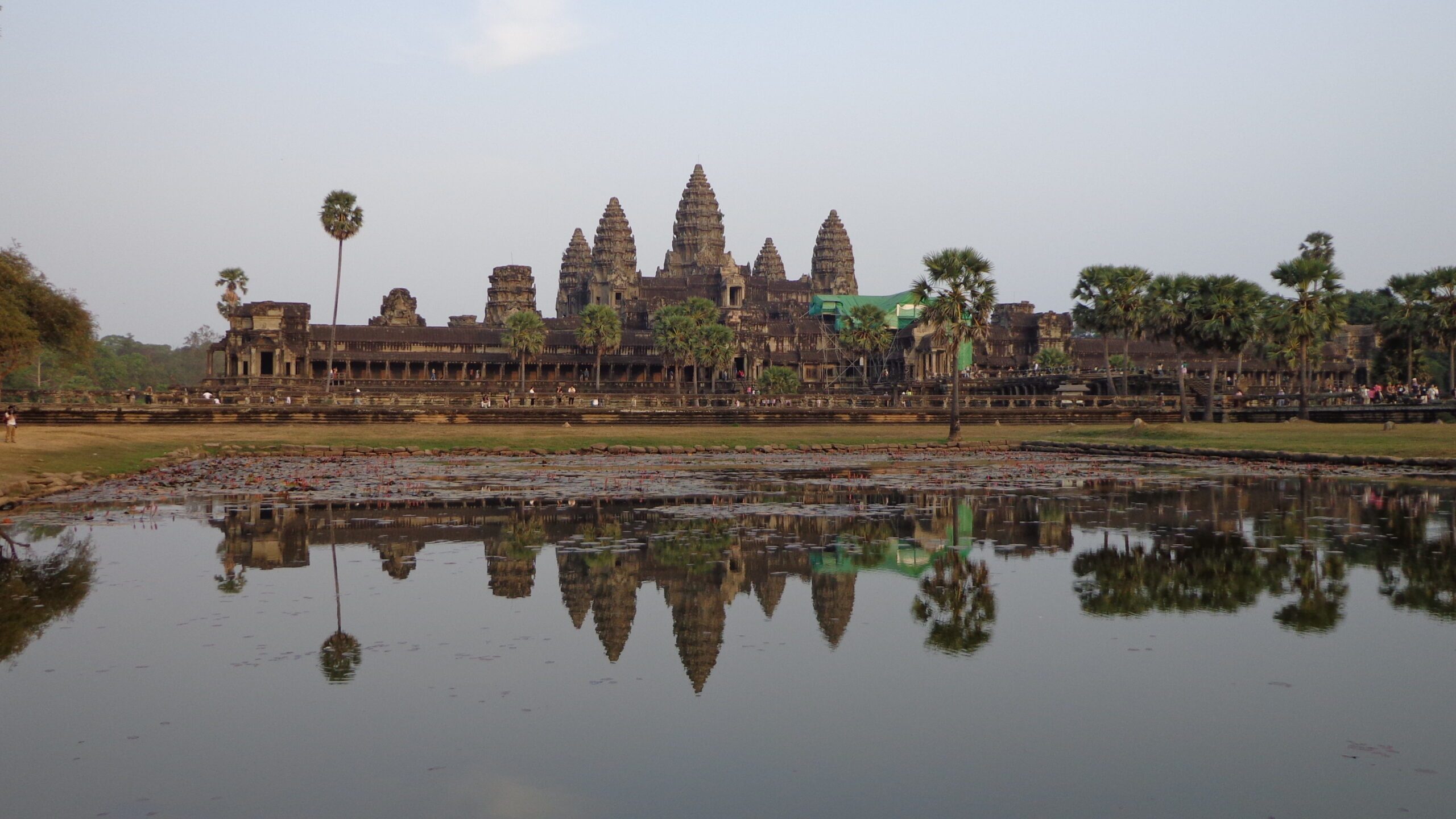
Your likely first stop is Siem Reap’s main attraction, Angkor Wat. This huge and impressive temple complex has many structures and buildings in a captivating and ruinous state. This temple complex dates to the 12th century. It was originally a Hindu temple but was gradually turned into a Buddhist one. As you explore, you’ll see details such as statues and bas-relief murals.
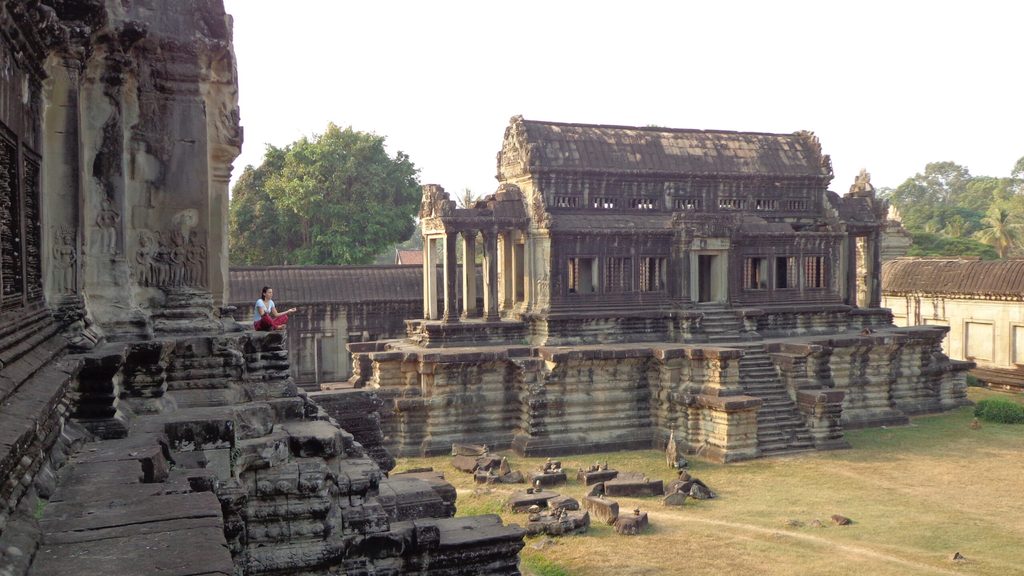
Many tourists also mention that Angkor Thom is a highlight. King Jayavarman VII had this complex built in the 12th century. Angkor Thom’s main draw is the Bayon. The latter contains several stone faces. There are also intricate galleries that depict the historical events, religious scenes, battles, and everyday life of the ancient Khmers.
Another noteworthy stop along this route is Ta Prohm. The latter will grab your attention because of the overgrown roots covering some parts of the temple. It also gained popularity because it was the location of one of the scenes in Tomb Raider starring Angelina Jolie.
*The driver you hire or the package you get will most likely take you to a lunch stop during your tour. You’ll most likely have to pay for this unless otherwise stated.
After temple-hopping, hang out somewhere in Pub Street. Here you’ll find many restaurants, shops, cafes, and bars. You can pass the time here before taking the night bus to your next destination. The fare for the Giant Ibis night bus costs around $17.50. You can find a cheaper bus for around $10. You can look for schedules and prices here: https://www.bookaway.com/.
Fees:
- Day pass to see the temples – $37
Phnom Penh (Cambodia)
Day 5
You’ll most likely arrive early in the morning (around 4-5 am) after taking the night bus from Siem Reap. Head straight to your accommodation and leave your luggage. Ask if you can check in early; if not you have time to rest in the lobby or common area of your accommodation because it’s too early for anything to be open. After resting for a few hours and getting ready, look for nearby restaurants for breakfast.
After breakfast, make your way to the Royal Palace. It’s open from 8 am to 11 am, and 2 pm to 5 pm. It’s closed during special events. Get into the palace as early as possible to avoid the crowds and have enough time to visit the Killing Fields and S-21 Prison.
The Royal Palace is an impressive complex that is the seat and residence of the royal family of Cambodia. The construction of the palace took place from 1866 to 1870. It’s a relatively new complex compared to the centuries-old ruins in Siem Reap. You’ll also find the Throne Hall and Silver Pagoda in the Royal Palace grounds. The Throne Hall is used to meet the king’s guests and as a place for religious and royal ceremonies. The pagoda contains an Emerald Buddha statue. Other buildings you’ll see are the Khemarin Palace, Inner Court, and the Moonlight Pavilion, just to name a few.
Reminders:
- There’s a dress code for visiting the Royal Palace. Both men and women should wear clothing that covers their chest, back, and shoulders. Wear shorts up to at least below the knee or better wear comfortable pants instead.
- Some parts are closed to the public.
- You can’t take photos of some areas in the complex.
Try to eat lunch early because it could take up to an hour to reach the Choeung Ek Genocidal Centre (Killing Fields) from the city. The Killing Fields is a reminder of Cambodia’s dark past under Pol Pot’s Khmer Rouge. As its name aptly describes, the fields are the area where many Cambodians died of summary execution. No one was spared, from babies to seniors. Just to be a suspected opponent of the government may lead to one’s death.
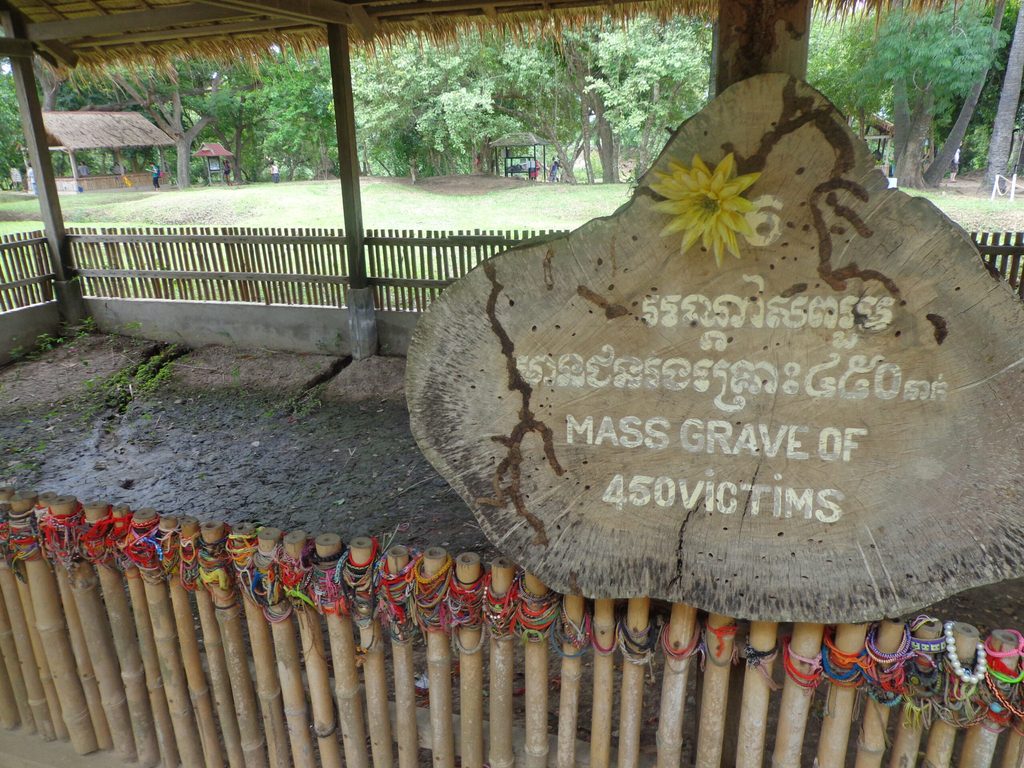
After the Killing Fields, your tuk tuk driver will take you to Tuol Sleng. The latter used to be a school before it was turned into S-21 Prison. The Khmer Rouge tortured and sentenced thousands of prisoners here. They confessed to crimes they didn’t commit and were then taken to the Killing Fields for their execution. Some of the prisoners were former Khmer Rouge and victims of periodic internal purges. Inside you’ll find photos of prisoners and torture rooms. A visit to the Killing Fields and S-21 is a heavy experience.
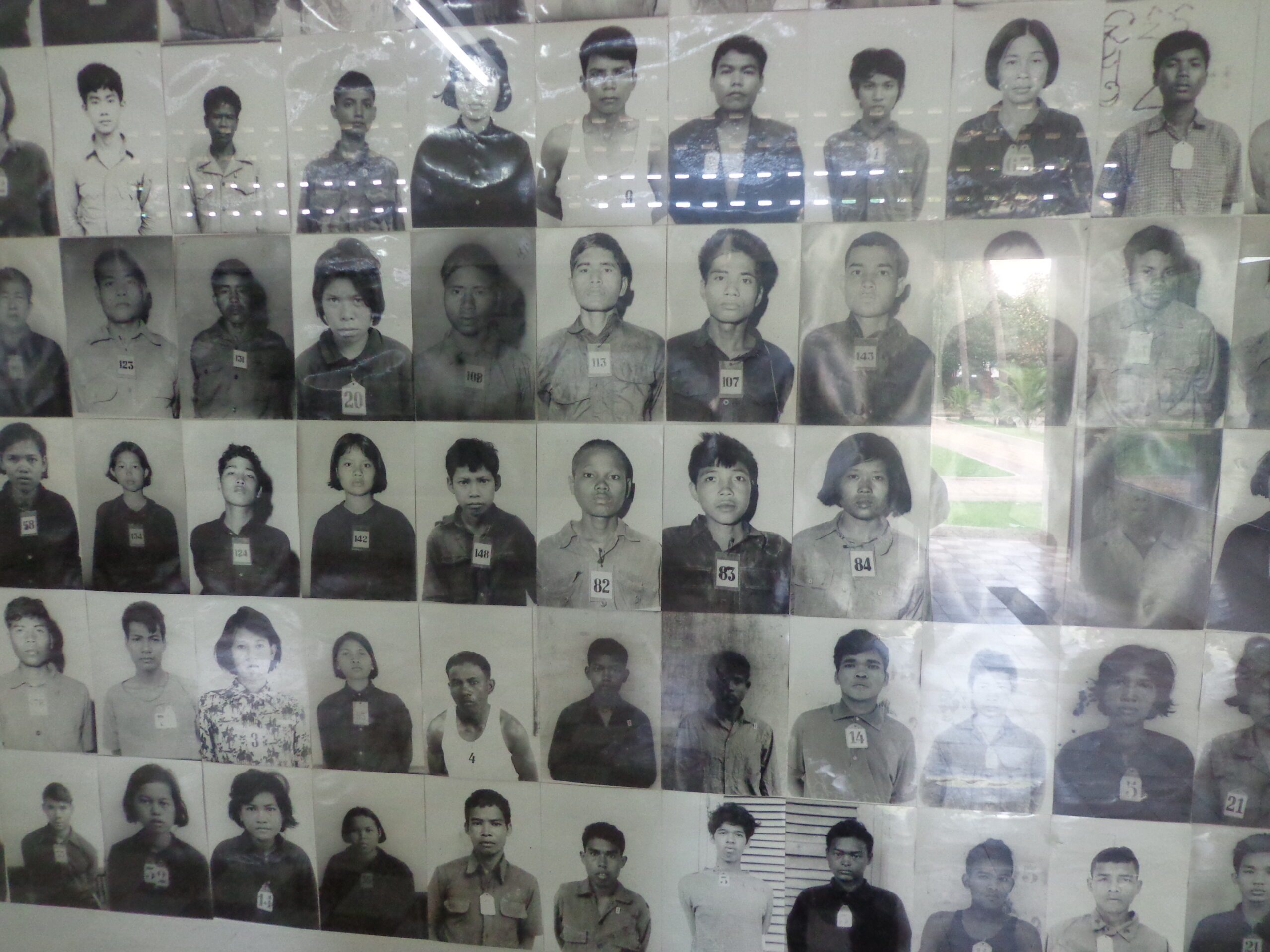
How to get to the Choeung Ek Genocidal Centre (Killing Fields) and Tuol Sleng S-21 Prison: The most convenient and affordable way to visit both places is to hire a tuk tuk driver. It’s fair to pay up to $20 for the driver to take you to both places and back to the city and wait for you during both stops. You can share the fare with other passengers who are also planning to visit both places. Travel time can take up to an hour per way.
End your day back in the city center for dinner and free time.
Fees:
- $10 – entrance fee Royal Palace
- $6 – entrance fee and audio guide for Choeung Ek Genocidal Centre (Killing Fields)
- $5 – entrance fee for Tuol Sleng S-21 Prison (additional US$3 for audio guide)
Day 6
Check out of your accommodation, grab something to eat, and/or do some last-minute shopping before boarding the bus bound for Ho Chi Minh City. The fare for the bus or van costs around $27 to $35 depending on the company and type. Travel time is approximately 7 hours or so depending on traffic and the time it takes all passengers to get through immigration. You can look for schedules and prices here: https://www.bookaway.com/.
Ho Chi Minh City (Vietnam)
Day 7
Depending on the time of your departure from Phnom Penh, you’ll arrive in the afternoon or in the evening. Make your way to your accommodation, check in, relax, and look for a nice restaurant while you spend the remainder of the day in Ho Chi Minh City. You can also arrange your half-day Cu Chi Tunnels tour through travel agencies in the city, your accommodation, or third-party sites like Klook.
Day 8
Spend half a day learning more about the Cu Chi Tunnels. The Viet Cong did whatever it took to defend their country against the invading Americans. They built extensive tunnel networks and traps to gain an advantage over the superior American forces. The tunnels were just big enough for Vietnamese soldiers. American soldiers that tried to enter often got lost or stuck, which made them easier targets for the Vietnamese. They used the tunnels to ambush clueless Americans. They also built living quarters and storage facilities for food, medicines, and ammunition in the tunnel network. Some sections of the tunnel have been widened for tourists. Half-day excursions usually cost around VND400,000, depending on inclusions.
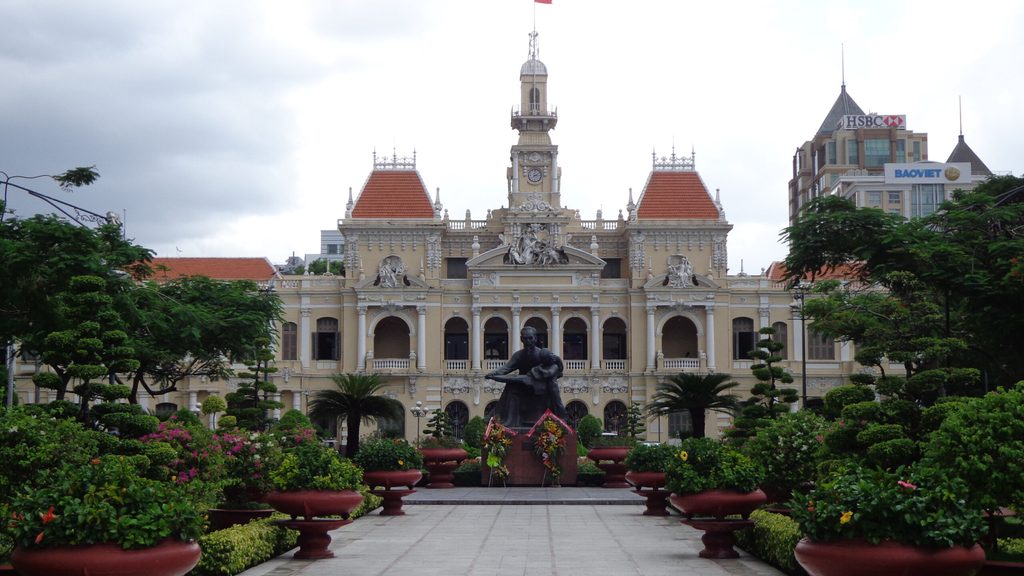
After returning to the city, visit some of HCMC’s most famous landmarks such as the Notre Dame Cathedral, Saigon Opera House, City Hall, and the Post Office. These buildings are vestiges of the French’s architectural influences on the country.
Day 9
The itinerary for this day depends on if the return flight you booked leaves at night or just after midnight (around 1 am). Cebu Pacific has flights that depart at around 10 pm and 1 am the next day. Check their website for flight availability. If you booked a morning flight, you could head straight to the airport early in the morning.
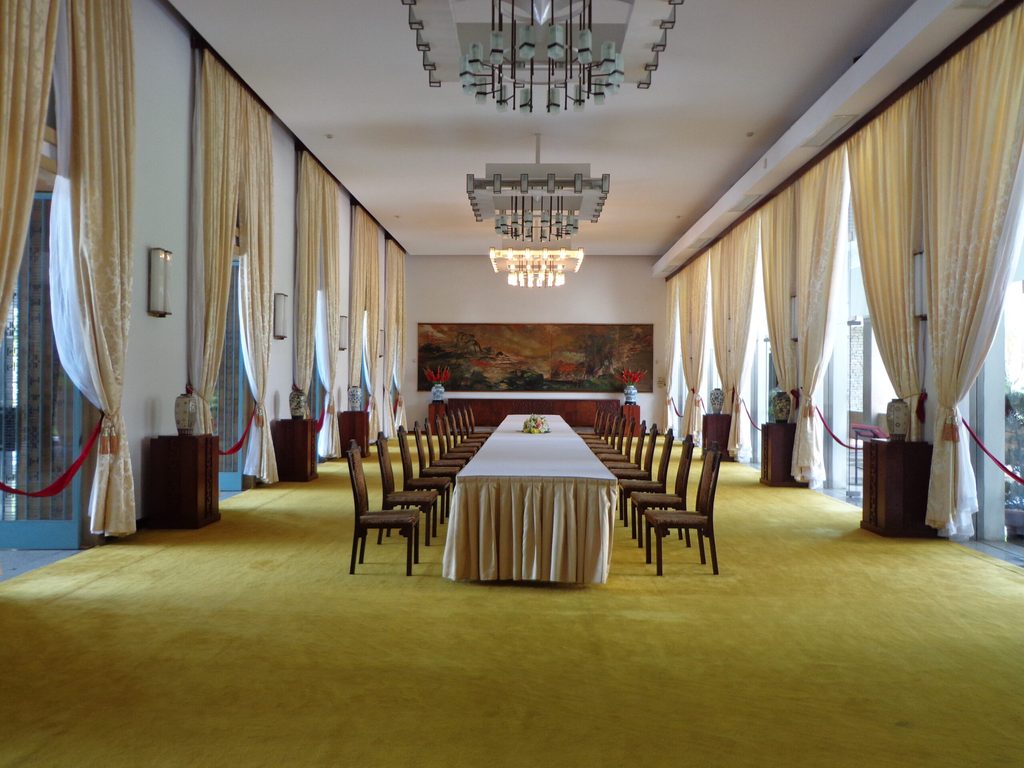
If you have one more full day, you can visit the War Remnants Museum and the Independence Palace, also known as the Reunification Palace. The museum has displays of the atrocities committed by both the French and Americans. The Independence Palace was the location where the North Vietnamese Army ended the war. You can visit some of the halls and rooms of the palace. After museum-hopping, spend the rest of the day before your flight shopping, hanging out, and/or eating at one of the many cafes and restaurants in the city.
Fees:
- War Remnants Museum: VND40,000
- Reunification Palace: VND65,000 (includes palace and exhibits), VND40,000 entry to the palace
How to get to the airport from the city: make your way to the Saigon Bus Station and look for bus #109 or #49. Alternatively, you can also go to Ben Thanh Bus Station and look for bus #152. The fare varies from VND10,000 to VND40,000. You can also use Grab to get to the airport.
How much will you spend?
A budget of P23,000 is enough to cover this itinerary, but this doesn’t include flights. This includes dorm accommodation or the occasional shared private room, budget meals, taking public transportation, bus or van rides for border crossings, overnight bus ride, entrance fees to all the attractions and activities mentioned above, and sharing a tuk tuk with at least one other person for tours around Siem Reap and Phnom Penh.
Your biggest expense is the border crossing buses or vans and visiting the temples in Siem Reap. It’s possible to spend less if you remove some attractions from the itinerary and take the cheapest possible options to cross the border. Save more money by eating at roadside restaurants or cafes and eat only the cheapest option on the menu. Street food is also a budget-friendly option to cut your expenses even more.
It’s also possible to shorten this itinerary and spend less money. You could reduce one day in Bangkok and leave for Siem Reap on the second day. It’s also possible to skip Phnom Penh and take an overnight bus directly to Ho Chi Minh City from Siem Reap. Olongpich Transport plies this route and offers an overnight trip. You can check their website for more information: https://olongpichexpress.com/.
You could also spend just two full days in Vietnam before your flight back to the Philippines. A condensed itinerary gives you six days to visit three countries. The length of your trip depends on your budget and the number of vacation leaves you can use. Not everyone has the luxury of quitting their job to travel or work remotely. – Rappler.com
Joshua Berida is a writer that loves to travel. He blogs at www.thewanderingjuan.net.



